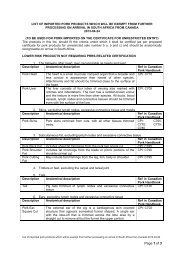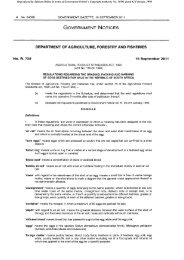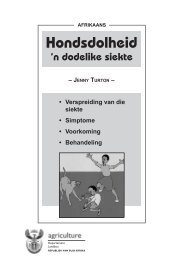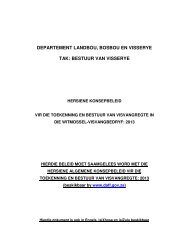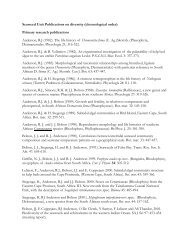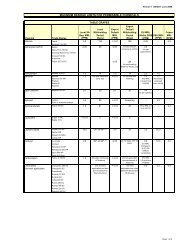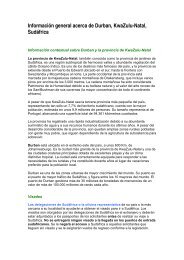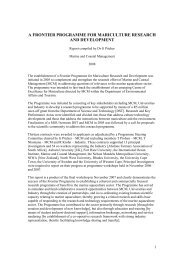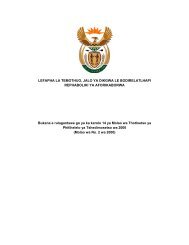Create successful ePaper yourself
Turn your PDF publications into a flip-book with our unique Google optimized e-Paper software.
Oval urchin Echinometra mathaei<br />
This black urchin with stout tapering spines of purple, brown<br />
or green, is the most common urchin in east coast rock pools<br />
where it emerges from hollows in the rock to graze at night.<br />
Short-spined urchin Tripneustes gratilla<br />
This large round urchin, with short white spines, is found<br />
concealed in weed beds. It holds pieces of algae over its<br />
body with its exceptionally long tube feet.<br />
Flower urchin Toxopneustes pileolus<br />
This large distictive tropical reef species is easily recognised<br />
by its pedicellaria, which open between the short spines to<br />
look like beautiful flowers. But beware – these nippers are<br />
armed with potentially lethal poison glands and should not be<br />
touched.<br />
Pencil urchins<br />
Pencil urchins occur in the tropics where their massive spines<br />
provide protection from the many predators. Their shells have<br />
very large knobs on which the spines move. The rough pencil<br />
urchin, Prionocidaris pistillaris, has ridged spines while the<br />
slate pencil urchin, Heterocentrotus mammillatus, has<br />
smooth, banded spines that are sold as attractive ornaments<br />
and chimes.<br />
Lamp and heart urchins<br />
These large pale urchins with flat-bottomed shells are coated<br />
with short flattened spines. The mouth is central and the<br />
anus is to one side on the under-surface. They plough along<br />
just below the surface of the sand, collecting organic particles<br />
of food. The petal-like patterns on the shell indicate the<br />
position of the rows of tube feet. Lamp urchins, E c h i n o l a m p u s<br />
c r a s s a, grow to 12 cm across and their shells become heavier<br />
as they age. If the urchin is turned upside down it looks like<br />
an old oil lamp. The heart urchin, Echinocardium cordatum,<br />
has a notch in the front leading to the mouth and giving the<br />
shell a heart-shape.<br />
Pansy shells<br />
Pansy shells are flat urchins with short spines. The character-<br />
istic petal-like pattern of holes in the dead shell indicates<br />
where the tube feet of the live animal extend. Pansy shells lie<br />
just below the sand in sheltered waters like Maputo Bay and<br />
Knysna Lagoon. When live they are purple in colour and feed<br />
on fine organic particles in the sediment. A tiny brittle starfish<br />
often shelters under pansy shells. The species Echinodiscus<br />
bisperforatus, found in Southern Africa, has two closed slits<br />
in the back half of the shell. There are several species, from<br />
other countries, which are commonly sold as curios and have<br />
different slits.<br />
Author: Margo Branch September 2000.<br />
Pencil urchin<br />
Lamp urchin<br />
Pansy shell<br />
FURTHER INFORMATION: • Branch, G. M. & Branch M. L. 1981. The Living Shores of Southern Africa . Struik, Cape Town.<br />
• Branch, G. M., Griffiths, C. L., Branch M. L & Beckley, L. E. 1994. Two Oceans: A guide to the marine life of southern Africa, David Philip, Claremont, Cape To w n .<br />
RELATED FACTSHEETS: • Echinoderms • Starfish • <strong>Abalone</strong> • Myths and Legends<br />
For more information, please contact: The Coastal Management Office, Marine and Coastal Management, Department of Environmental Affairs and Tourism, Private Bag X2,<br />
Roggebaai 8012, Cape Town, South Africa. Tel: +27 (0)21 402-3208 Fax: +27 (0)21 418-2582 e-mail: czm@mcm.wcape.gov.za Website: http://sacoast.wcape.gov. z a





